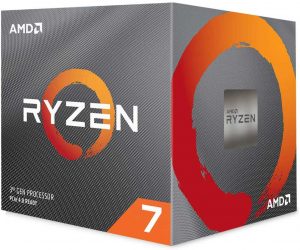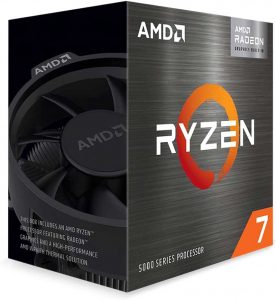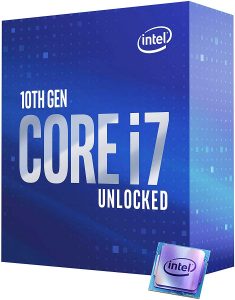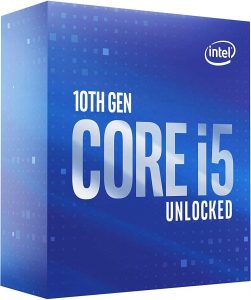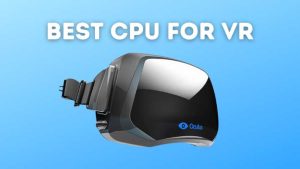GPU, not your CPU, conducts the majority of the work in deep learning. For this purpose, you should have the best processor. Selecting the best CPU for Deep learning is critical because it uses many smaller cores rather than a few speedy ones.
Because your GPU can only function at the speed of your CPU, most individuals who use deep learning software have several graphics cards, which means you’ll need the best CPU for programming to provide enough data to them and plenty of PCIe connectors.
Choosing the best gaming/learning CPU for your needs might be difficult, especially unfamiliar with the most recent offers. However, for the sake of the latest improvements, the CPU market is constantly evolving, with newer, more powerful alternatives frequently changing pricing.
A sufficient amount of RAM is also required for deep learning. So which CPU is the best for deep learning, and how do you choose it? Fortunately, we’ve compiled a good selection to get you started.
By reading this post, you will discover why choosing the best CPU for deep learning is essential.
Top 7 Best CPUs for Deep Learning
- AMD Ryzen 7 3700x Unlocked Processor – Best Performance CPU for Deep Learning
- Intel Core i9-9900K Desktop Processor – Best CPU for Visual Studio
- AMD Ryzen 7 5700G Desktop Processor – Best Budget CPU for Artificial Intelligence
- Ryzen 5 5600X Processor – Best Threadripper CPU
- Intel Core i7-10700K Desktop Processor – Best CPU for Programming
- AMD Ryzen 5 2600 Desktop Processor – Best CPU for Coding
- Intel Core i5 10600K Desktop Processor – Cheap Processor For Learning Purposes
1. AMD Ryzen 7 3700x Unlocked Desktop Processor
AMD’s third-generation Ryzen CPUs have faster clock rates and more cores than the primary first and second-generation components, and the Ryzen 7 3700X is currently one of the finest CPUs for gaming.
The Zen 2 CPUs are so fantastic that AMD nearly doesn’t need the faster options. The backup 3700X is fully competent in handling the offense and isn’t as demanding when signing bonuses and contracts.
However, the 3700X frequently exceeds the minimal clock speed, particularly in light to medium workloads. If you perform a lot of 3D rendering or video transcoding, upgrading to the Ryzen 9 3900X makes sense, but the 3700X is one of the best.
The Ryzen 7 3700X performs extremely well and effectively in demanding tasks like video editing, streaming, intensive multitasking, or other heavy-duty loads.
However, for those looking to upgrade to a better or higher-end GPU in a few months, the 3700X stands out owing to its potential to build an excellent CPU-GPU (high-end) combination with little bottlenecking and great overall performance.
The Ryzen 7 3700X is a powerful CPU that is a good alternative for less than $300. It is quick, future-proof, extensively utilized, and extremely popular; thus, rarely in stock. In addition, the CPU is extremely flexible and works well with all low and high-end GPUs.
Pros
- Superb for gaming
- Perfect for productivity and multitasking
- The efficient manufacturing process for thermals
- It includes a CPU cooler at no additional cost
- Its high-speed processor
- Great for content creation
Cons
- Comparably expensive but worth every single penny
- Expensive for thread count
2. Intel Core i9-9900K Unlocked Desktop Processor
The Intel i9 10900KF was positioned as a gaming chipset after its release. At the time, Intel claimed that it was the fastest and best CPU for deep learning and gaming in the world. Meanwhile, several quick and more powerful chips were launched.
I9 10900KF is quite similar to I9 10900K except that it does not have a GPU built-in. Instead, chipsets for both devices utilize the 14nm technology, which has been in use for more than a decade already.
So it will have fewer cores than its AMD-priced competitor, which is also a downside. You can see this by comparing it to the AMD 3900X processor, which has 12. The i9-9900K, on the other hand, has just eight cores.
The Core i9-9900K is the only CPU that supports Intel Hyper-Threading. In reality, this implies that the Core i9-9900K can execute up to twice as many threads in parallel as the octa-core.
These changes will be most evident in multi-threaded programs, which will run better with a greater core and thread count.
Pros
- Great core performance
- Excellent for gaming and deep learning
- It contains a high-speed processor
- Can be overlocked
- It’s great for creating content.
Cons
- May gets heat up after long-term use
- No stock cooler included
3. AMD Ryzen 7 5700G Desktop Processor
AMD’s first 7nm ‘Cezanne’ Zen 3 APUs for desktop PCs arrive at the eight-core 16-thread Ryzen 7 5700G. AMD intends to use the Cezanne processors to fill significant pricing gaps in its Ryzen 5000 series, leading to our best CPU for data science list and CPU Benchmark hierarchy.
The 65W 8-core 16-thread Ryzen 7 5700G processor has a base frequency of 3.8 GHz and a peak clock of 4.6 GHz, 16MB of L3 cache, and eight Radeon RX Vega CPUs that run at 2.0 GHz.
The Ryzen 5000G chips, like other Zen 3 CPUs, step up from DDR4-2933 to DDR4-3200 interface, which assist will enhance gaming performance with the integrated GPU.
However, compared to the eight-core Ryzen 7 5800X, you get the Radeon graphics engine but lose 100 MHz of max boost clocks and half of the L3 cache.
The 5700x is excessive if all you want is a CPU for gaming. However, this chipset’s ability to perform high-resolution video rendering and decoding put it over the top.
Pros
- Fastest Integrated Graphics
- Solid 1080p gaming
- Superior power consumption
- Compatible with AM4 motherboards
- High thread count
Cons
- More expensive than its predecessor
- No hyper-threading
4. AMD Ryzen 5 5600X Unlocked Desktop Processor
The AMD Ryzen 5 5600X is a mid-range Desktop CPU. It had six cores and 12 threads when it was introduced, with a base clock of 3.7GHz, a maximum speed of 4.6GHz, and a power rating of 65W.
Ryzen 5 5600X is also the successor of AMD’s previous generation Ryzen 5 3600X CPU, introduced in 2019 and built on the Zen 2 and 7nm technology.
The best processors for machine learning, in our opinion, are those that provide exceptional performance at a reasonable price. And the Ryzen 5 5600X excels at this notion.
Increased IPC gains, along with a significant turbo increase of 4.6GHz, mean that even single-core performance – long a weak link in AMD CPUs – is now competitive.
The 5600X has the proper speeds and core count for any current game right now. In addition, it should work nicely with any current graphics card.
Furthermore, AMD provides the PBO function to preserve balance. PBO is an abbreviation for Precision Boost Drive, which is an automatic overclocking tool. It optimizes the processor’s performance while also keeping it cool and stable. It keeps the system from overheating during prolonged use.
Pros
- Mid-range desktop processor released with six cores
- It contains 12 threads
- It has a 65W power rating
- Part of the Ryzen 5 series
- Faster programming
- Best for deep learning
Cons
- Lacks integrated graphics
- Not as good value as the competition
5. Intel Core i7-10700K Desktop Processor
If you’re looking for a low-cost CPU, look no further. There are eight cores and 16 threads in the i7 10700KF, typical for a spending plan CPU.
All cores have a base frequency of 3.80GHz and a turbo boost speed of 5.1GHz. Unfortunately, there is no Thermal Velocity Boost, which means you can’t overclock your processor above Turbo Boost speeds on this model, which is disappointing.
In line with expectations, the i7 10700KF uses 14nm++ technology. Since the 7nm platform is better, AMD CPUs are more productive.
Fortunately, Intel was able to enhance clock speeds while also increasing the thread count. However, it improves performance, but it also increases power consumption.
When Intel updated the LGA1151 socket with a new one, it reduced power usage. Moreover, it helps to enhance power efficiency, although it still misses the mark of AMD’s 3900X or 3800X processors in this regard.
The processor’s eight cores allow it to execute many applications simultaneously without slowing down the system. In contrast, the 16 threads allow a basic ordered series of instructions to be sent through or processed by a single CPU core.
Pros
- Good gaming performance
- It has high clock speeds
- Solid overclocking
- High core and thread count
- Great gaming performance
Cons
- No PCIe 4.0 support
6. AMD Ryzen 5 2600 Desktop Processor
The AMD Ryzen 5 2600 is one of the Top CPUs for visual audios available today, with a high core count, good gaming performance, and a low price.
The second-generation AMD Ryzen 2 processor line debuted with two new X-series CPUs that offer the highest clock speeds and outstanding performance. The second-generation AMD Ryzen 2 processors have created the best CPUs for the deep learning team red has ever developed.
These X-series chips offer the most extraordinary clock speeds and allegedly the highest level of automated overclocking, according to Ryzen’s newest silicon Precision Boost and XFR capabilities.
That may sound like media exaggeration, but AMD has developed a pair of high-end CPUs without the typical high-end price tag with the Ryzen 5 2600X and Ryzen 7 2700X, but the normal ones still have a lot to offer.
Surprisingly, if you want to remain within your budget and spend a little more on a CPU that supports hyper-threading than the 9400F, the Ryzen 5 2600 appears to be gaining traction.
The AMD Ryzen 5 2600 has six cores and twelve threads, with adequate clock rates for well-optimized performance in gaming, multitasking, video editing, and daily chores. Furthermore, 2600 supports overclocking for a noticeable performance improvement.
Pros
- Consumes very little power Includes a CPU cooler
- Good performance/price ratio
- Outstanding performance
- Good temperatures control (Normal CPU Temperature)
- AMD includes a processor cooler
Cons
- Overclocking headroom for all cores is limited.
- AM4-compatible motherboards are required for this Motherboard
7. Intel Core i5 10600K Desktop Processor
The Core i5-10600K 6-Core 4.10GHz CPU is built on a 14nm++ Comet Lake-S microarchitecture revision. It has six physical cores, clocked initially at 4.10 GHz but may be increased to 4.80 GHz by utilizing six cores with Turbo Boost. L3 Cache is 12MB on the Core i5-10600K.
The 10600K is a fantastic choice for you. Intel’s mainstream i5 is the best processor for deep learning, and it is currently the flagship i5 chip. So not only is the 10600K a superb performer, but it also has a reasonable price-to-performance ratio.
It is especially true when compared to the i7 CPU from the 10th generation. That’s correct; the i5 10600K is that amazing. Another advantage of the 10600K is that it provides a wide range of possibilities.
You can purchase a Z-series motherboard for overclocking or a cheaper one if you don’t care about that. This is why the Core i5 10600K is such an excellent pick.
Consider the PC to have plenty of space and enough energy to keep everyone in the room interested, busy, and productive.
If there is a lot of work in the queue, the processor will not sit idle or keep you waiting. Instead, numerous jobs will be intelligently planned and executed. It doesn’t matter if you’re into programming, video editing, gaming, 3D rendering, or anything else.
On the plus side, the Intel Corei5 is easy enough for novice and intermediate-level coders to profit greatly from it, and it is also ideal for mid-range gaming.
Pros
- Top-notch gaming frame rates
- Outstanding for gaming
- Excellent for productivity
- Integrated graphics chip
- Help with multitasking or multi-threaded applications.
Cons
- No Turbo Boost
CPU For Deep Learning – Buying Guide
Model Name and Number
The tangle of brands and numbers that comprise a CPU product name might be perplexing.
Both Intel and AMD categorize most of their processors as “good, better, best,” beginning with Core i3/Ryzen 3 and progressing to Core i5/Ryzen 5, Core i7/Ryzen 7, and Core i9/Ryzen 9. The Core i9-10900K is at the pinnacle of Intel’s mainstream product line.
Cores
Those processors are located within the central processing unit (CPU)s. Modern CPUs feature two to 64 cores, with the majority of chips having four to eight. Each is capable of addressing its responsibilities.
In most instances these days, at least four cores—or at least four threads—are required.
Cache
The cache is the internal memory of a CPU. There are three types of cache:
- L1 cache, fastest and the smallest one.
- L2 cache, which is roomier but slower.
- L3 cache, which is much bigger but also much slower.
When compared to the PC’s RAM, the cache offers lightning-fast speed.
IPC
IPC (Instructions per Clock Cycle) measures the overall performance and efficiency of a CPU under specific conditions.
Even if you know the clock frequency and the number of cores, evaluating the actual performance of a processor is challenging since the architecture of each one is so important.
TDP
TDP is an abbreviation for Thermal Design Profile/Power. In a nutshell, it is the maximum amount of heat produced by a chip (You must need to know what happens when the CPU Overheats), measured in Watts. This number is significant for measuring CPU utilization as well as selecting an appropriate cooling solution.
Over Clocking
Overclocking is an art form that many enthusiasts love performing. It is the technique of pushing a CPU to its limits by forcing it to run at higher-than-specified clock rates.
But, on the other hand, overclocking may not be worth the effort or money for the ordinary user if you’re not interested in the challenge of seeing how fast you can get your chip to go without crashing.
Clock Speed
Clock speed is another essential factor to consider when purchasing a CPU. The clock speed is in the megahertz (MHz) and gigahertz (GHz) rating, and it reflects the number of collections of activities that a processor can complete every second.
It is a reasonable approximation of the speed of individual cores, but it does not convey the entire picture. For example, if two processors of the same generation have the same cores, but one has a more incredible clock speed, it will outperform the other.
Bottle Necking
Finally, there is the issue of bottlenecking, which is typically an essential factor to consider when selecting the proper CPU for your gaming setup.
When a CPU can’t “keep up” with a more powerful GPU, the GPU’s processing capacity isn’t fully used since the CPU can’t issue instructions quickly enough — as a result, combining a weak CPU with a powerful GPU is typically a terrible choice.
Frequently Asked Questions
How is GPU different from CPU?
Answer to the question, how is GPU different from CPU? The GPU (or graphics processing unit) is a processing unit that processes information supplied to it by the software and apps on your computer.
It is similar to a CPU in that it is a processing unit that processes information sent to it by the software and applications on your computer. However, the only purpose of a GPU is to process graphics-related material that your computer requires.
Does programming require a good CPU?
A good CPU enhances the performance of program loading and construction time and the ability to operate virtual devices and simulators smoothly.
If you work on Data Science, Machine Learning, or Deep Learning applications, a decent multi-core CPU will considerably increase the computation of processing complex models and images.
Is AMD better for coding?
In terms of cores or threads, an Intel or AMD CPU that excels at single-core performance is sufficient to meet your coding requirements. You can get a multi-core CPU, but it should also provide good single-core value. AMD offers more cores at lower costs.
Which is the best CPU for gaming and programming?
There are two key brands to consider when looking for the best CPU for gaming:
- AMD Ryzen 7 3700X
- Intel Core i9-9900K
- AMD Ryzen 7 5700G
- AMD Ryzen 5 5600X
- Intel 8 Core i710700K
- Intel Core i5 10600K 6 Cores
Is its quad-core processor good for programming?
A quad-core processor provides the speed and performance required for programming. Intel Core i5 and Core i7 processors are also enough for most programming tasks. However, if you are a novice who does not want to invest in a powerful computer, a core i3 may be enough for simple programming tasks.
Does CPU matter for deep learning?
CPU can play a role in deep learning, but it is not as important as the GPU. Deep learning models are computationally intensive, and training them can take a significant amount of time even with powerful GPUs. While a CPU with more cores can improve the performance of deep learning tasks, a GPU with more CUDA cores will have a much larger impact on training speed.
That being said, a powerful CPU is still necessary for a deep learning system. A fast CPU is needed to perform the pre-processing and post-processing tasks and also to transfer data between the CPU and GPU memory, it is also necessary to load the data and run the training script. So having a fast CPU with sufficient memory can help to reduce the training time of deep learning models.
Which CPU is best for data science?
The best CPU for data science depends on the specific needs of your workload. In general, a CPU with a high number of cores and a high clock speed is preferred for data science tasks, as it will be able to handle multiple threads and perform complex calculations quickly.
Which is better for deep learning AMD or Intel?
Both AMD and Intel CPUs can be used for deep learning, but the choice between the two will depend on the specific needs of your workload.
Currently, Intel CPUs are known for their high single-thread performance and clock speeds, which can be beneficial for deep learning workloads that require fast data transfer between the CPU and GPU. Intel’s Xeon processors are often used in data centers and enterprise environments and are optimized for large-scale deep learning workloads.
On the other hand, AMD CPUs have a higher core count and are more affordable than Intel’s equivalent. They are also compatible with more memory channels, which can be beneficial for deep learning workloads that require large amounts of memory. The Ryzen Threadripper Pro 3995WX is an example of a high-end AMD CPU that has 64 cores and is well-suited for large-scale deep learning workloads.
When it comes to GPU, Nvidia is the most popular choice for deep learning, as it offers a wide range of powerful GPUs with CUDA cores optimized for deep learning workloads.
Conclusion
Finally, choosing the best CPU for a specific task is critical. It is dependent not just on your current requirements but also on your future needs. The general goal of this list is to provide you with some of the most powerful and best CPUs for deep learning with good graphics cards.
As a future-proof choice, I would go with the Intel Core i7 10700K or the AMD Ryzen 7 3700X. These low-cost CPUs offer fast clock rates, considerably enhanced performance over prior generations, and enough cores and threads to do any work easily.
I hope this list gave you an idea of what CPU would be best for your gaming and other applications or multitasking demands. Finally, don’t forget to leave a remark with your favorite choice from the list.

